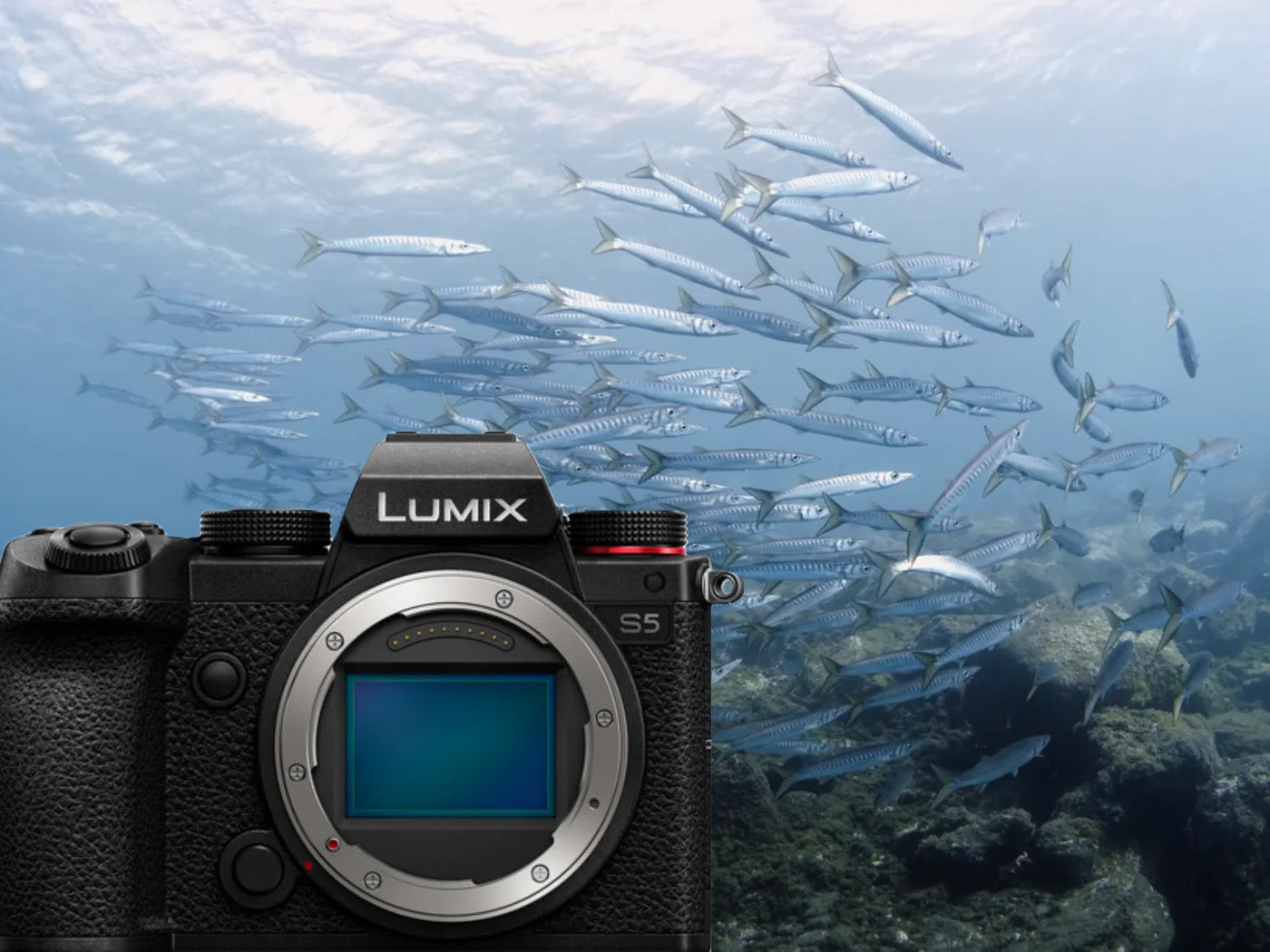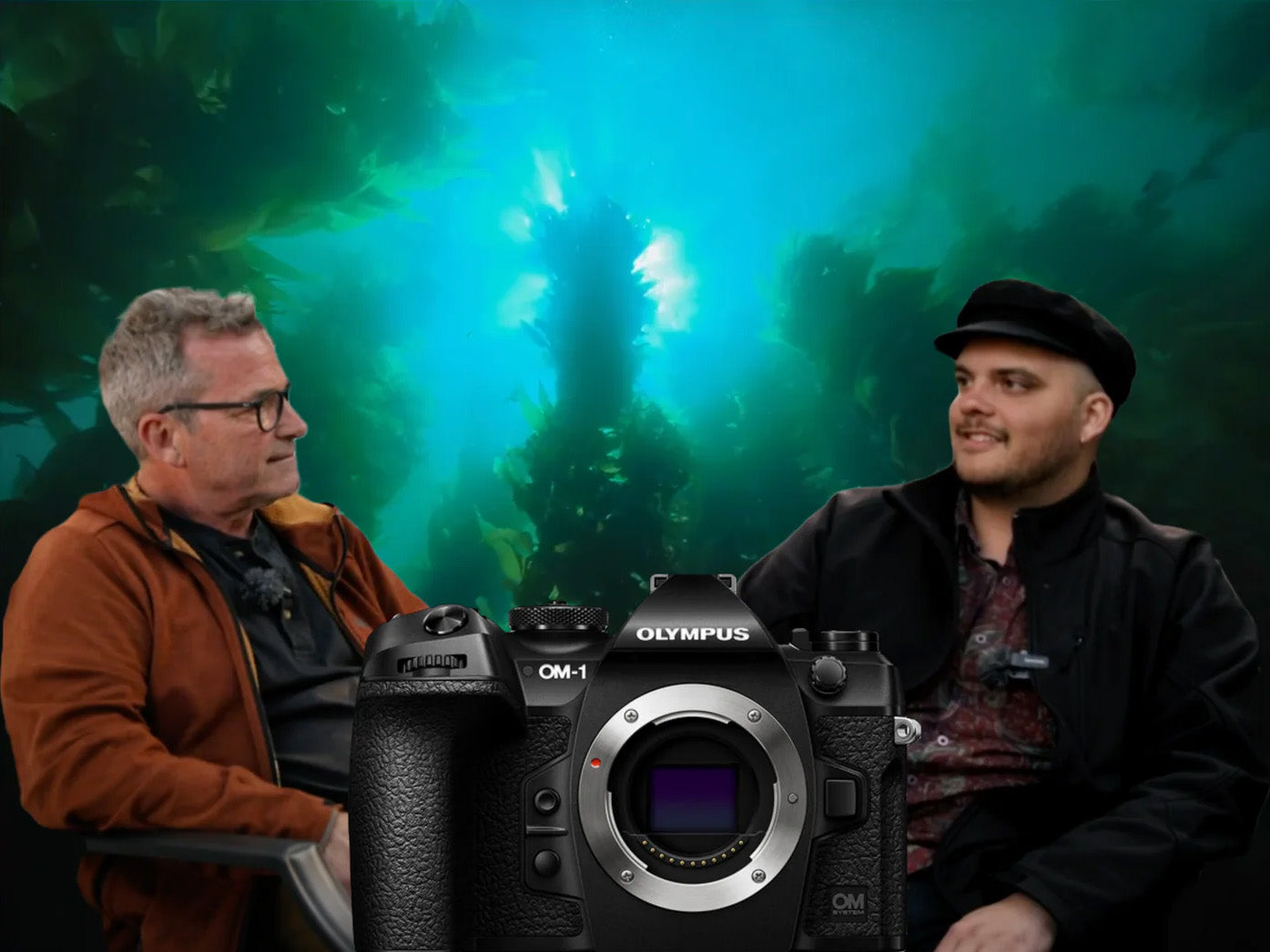By Brandi Mueller
The Z7 II is one of Nikon’s latest in their line of mirrorless cameras. As mirrorless cameras continue to improve it seems that many of us are considering making the switch from DSLR and the options keep expanding. One of the strongest motivations for going mirrorless for underwater photograph is their fantastic performance in low light. When shooting underwater, light is lost even on the sunniest of days, so having every advantage with sensor capabilities is a good thing.

Azul Ha, Mexico. F5.6 • 1/30 • ISO 2500 • 16-24mm © 2022 Brandi Mueller
From the Red Sea to Black Caverns
Still not quite sold on mirrorless, I’ve been tightly holding on to my Nikon D850. When the opportunity to try out the Nikon Z7 II in the Red Sea and the cenotes of Mexico’s Yucatan Peninsula came up, I had to give it a try. Shooting conditions varied from crystal-clear blue waters in the Red Sea to pitch black inside caverns and caves. Overall, I was impressed with the photos I ended up with. I really like the vibrant colors and contrasty nature of the images the camera produced and, as advertised, its low light capabilities were excellent.

Cenote Eden, Mexico. F4.5 • 1/30 • ISO 2500 • 16-24mm © 2022 Brandi Mueller
Choosing the Right Lens
Throughout my trial, I used a Z-series 14-30mm lens as well as my F-series 8-15mm fisheye, 105mm VR macro, and 16-35mm rectilinear lens with the FTZ mount adapter. All the lenses performed well and overall similar to what I was used to. I did notice the autofocus was a bit slower than my D850, particularly when using the lenses with the adapter. That being said, once focus was locked, the images were tack-sharp. I struggled the most when shooting the 105mm macro with fast moving fish.

Red Sea. F10 • 1/200 • ISO 200 • 8-15mm © 2022 Brandi Mueller
When taking wide angle images, the 8-15mm fisheye lens is still my favorite for underwater and it performed well with the adapter on the Z7 II. I don’t prefer the fisheye when shooting wrecks or caves where the fisheye effect shows bent lines and makes images look distorted. The Z 14-30mm was perfect for cenote and cave shots, delivering a very large scene without the curved lines and I found it focused the fastest when comparing my 8-15mm and the 16-35mm.

Otoch Ha, Mexico. F7.1 • 1/30 • ISO 2500 • 16-24mm © 2022 Brandi Mueller
Viewfinder vs LCD Screen
Try as I might, I never got used to the electronic viewfinder through the eye piece. It was just too small and I think the added distance from your eye from any underwater housing makes it more difficult to see. When talking to other mirrorless shooters, most of them were not using it either. I ended up using the LCD screen on the back of the camera to compose and review my shots. It was worthwhile for me, after the first few dives, to put the images on my computer screen and compare to the LCD camera screen. The camera screen has adjustable properties and I found what I was seeing on the LCD was a bit brighter and sharper than the images actually were. One can change the brightness on the screen to better represent what the images will really look at, or it’s just nice to know that what you’re seeing on the screen is a little brighter and sharper than it will actually be.

Red Sea. F18 • 1/200 • ISO 125 • 105mm © 2022 Brandi Mueller
Low Light Capabilities
Shooting light beams in the cenotes can be difficult to properly expose due to there being both very bright and very dark areas in the image. These situations were another place that the camera preformed very well. I liked that the results allowed me to not over-expose the light beams, but there were some details still seen in the dark areas of the cavern walls. I also found if I under-exposed slightly I was able to pull out a lot of the shadow details in post-production. Of course, we should always aim to get the desired image in-camera, it is nice to be able to salvage some images that weren’t quite right.
I was most impressed shooting in (almost) complete darkness. Taking the Z7 II into caves, I started increasing the ISO and was very impressed by the results. With staged off-camera video lights I was able to get nice exposures without a lot of noise in these low light environments.

Azul Ha, Mexico. F6.3 • 1/60s • ISO 2500 • 16-24mm © 2022 Brandi Mueller

Otoch Ha, Mexico. F8 • 1/50 • ISO 2500 • 16-24mm © 2022 Brandi Mueller
Video and File Storage
The Z7 II is a 45.7MP full frame camera and shoots 4K, full HD video. I didn’t get a chance to try out the video too much, but the specs look promising. It’s also nice that the camera has two slots for memory cards, an SD and a XQD. My D850 has this as well and it’s nice to be able to have more memory and program where you want images; such as sending video to one card and still to another or sending everything to both and automatically creating a backup.

Red Sea. F18 • 1/200 • ISO 200 • 8-15mm © 2022 Brandi Mueller
One of the selling points of mirrorless cameras is their smaller size, which is nice for land, and the Z7 II is weights a half pound less than the D850. But when you take it underwater it’s about the same size with lenses, housing and strobes.

Azul Ha, Mexico. F11 • 1/25 • ISO 2500 • 16-24mm © 2022 Brandi Mueller
Conclusion
Overall, it was a great camera to shoot underwater with. For low light is performed significantly better than my D850 and it will be tough for me to go back to using my DSLR in caverns and caves. The dynamic range was great and I got sharp details even in large, wide-angle images. My main complaint would be the auto-focus speed for macro, but I think after using the camera more, one would get more used to it and get better results, quicker. This is a great camera for those starting out in underwater photography or upgrading their current system.

Red Sea. F13, 1/200s, ISO 125, 105mm © 2022 Brandi Mueller
 Ambassador Brandi Mueller has been nursing an addiction to WWII wrecks for years now. She fulfilled her childhood dream of becoming a Marine Biologist, then set off to travel the world exploring and teaching underwater photography. She published The Airplane Graveyard in 2018 documenting the history of wrecks photographed during her years in Kwajalein Atoll. She moved on to captain the MV Truk Odyssey in 2019 and we're never quite sure where she'll turn up next. Read more...
Ambassador Brandi Mueller has been nursing an addiction to WWII wrecks for years now. She fulfilled her childhood dream of becoming a Marine Biologist, then set off to travel the world exploring and teaching underwater photography. She published The Airplane Graveyard in 2018 documenting the history of wrecks photographed during her years in Kwajalein Atoll. She moved on to captain the MV Truk Odyssey in 2019 and we're never quite sure where she'll turn up next. Read more...
Want the easy way to improve your underwater photography? Sign up for our weekly newsletter for articles and videos directly in your inbox every Friday:
Additional Reading
Nikon Z7 and 8-15mm Fisheye Underwater Photos with Compact 8 inch Dome
First Look Nikon Z6, Z7 Mirrorless Underwater Housing
The Airplane Graveyard by Ambassador Brandi Mueller
Caverns and Cenotes Underwater Camera Settings
Macro Close-Up Underwater Camera Settings
Nikon Z6 II, Z7 II 200DL Underwater Housing Compatibility Update
My Top 5 Favorite Wrecks of Truk Lagoon
Unboxing the Nikon Z9 Flagship Z Mirrorless Camera [VIDEO]













